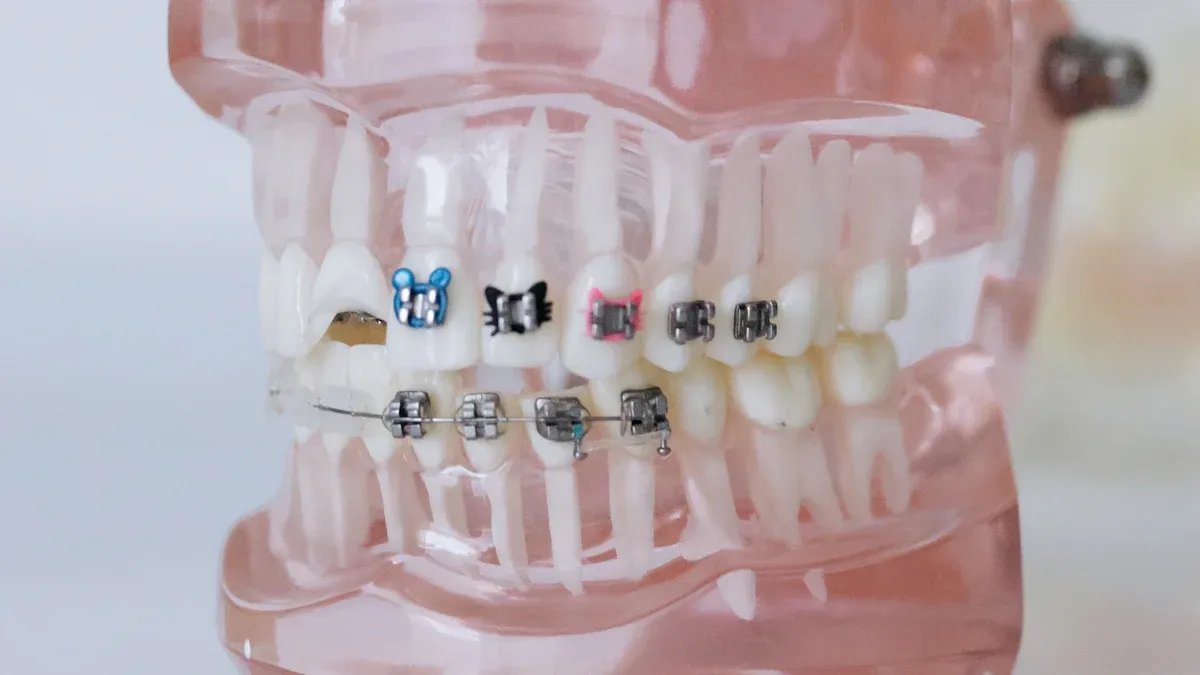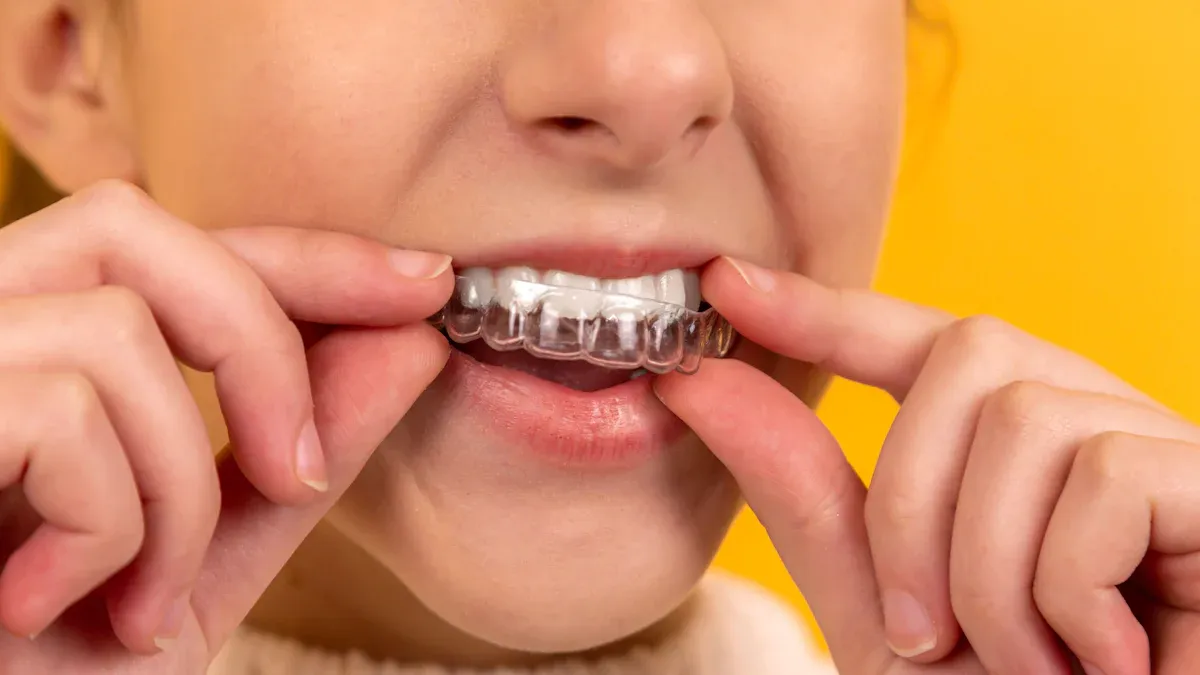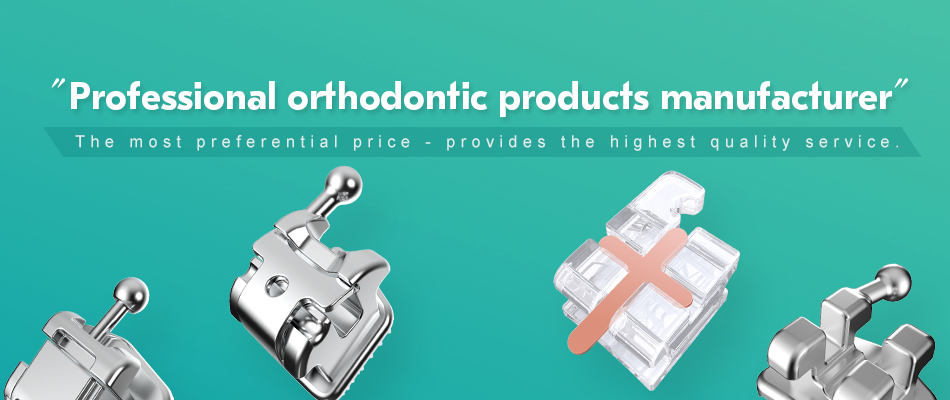In 2025, I see more patients choosing 、 because they want a modern and efficient orthodontic solution. I notice these brackets offer gentler force, which makes treatment more comfortable. Patients like that they spend less time in the chair compared to traditional braces. When I compare self-ligating brackets to older systems, I find the technology moves teeth faster and keeps oral hygiene simpler. Many people appreciate the sleek look and the discreet options now available.
Key Takeaways
- Self-ligating brackets use a built-in clip to hold the wire, reducing friction and making tooth movement gentler and more comfortable.
- These brackets speed up treatment by moving teeth faster and often shorten the overall time you wear braces.
- Patients spend less time at the orthodontist because self-ligating brackets need fewer adjustment visits.
- Cleaning is easier with self-ligating brackets since they do not use elastic bands, helping keep teeth and gums healthier.
- Self-ligating brackets look smaller and less noticeable, offering discreet options that boost confidence during treatment.
Orthodontic Self-Ligating Brackets: What Are They?

How Self-Ligating Brackets Function
When I explain to my patients, I start with the basics. These brackets use a built-in mechanism to hold the archwire in place. I do not need elastic bands or metal ties. Instead, a small clip or sliding door secures the wire. This design allows the wire to move more freely. I notice that this reduces friction and helps teeth shift with gentle, consistent force.
I see several benefits in daily practice. Patients tell me they feel less discomfort during adjustments. The brackets apply steady pressure, which encourages efficient tooth movement. I find that the self-ligating system makes it easier for me to monitor progress and make precise changes. Many patients appreciate that their appointments are shorter because I do not spend extra time changing elastics.
Tip: If you want a smoother orthodontic experience, ask your orthodontist about self-ligating brackets. The advanced design can make a noticeable difference in comfort and efficiency.
Differences from Traditional Brackets
I often compare self-ligating brackets to traditional braces for my patients. Traditional brackets rely on elastic bands or metal ties to hold the wire. These bands create more friction, which can slow down tooth movement and increase discomfort. I see that patients with traditional braces often need more frequent visits for adjustments.
Self-ligating brackets, like those from Denrotary, offer a modern alternative. The built-in clip system eliminates the need for elastics. I notice that this leads to easier cleaning and better oral hygiene. Food and plaque do not get trapped as easily. Patients tell me they feel more confident with the discreet look of these brackets. I recommend for anyone who wants a streamlined treatment process and improved comfort.
| Feature | Self-Ligating Brackets | Traditional Brackets |
|---|---|---|
| Wire Attachment | Built-in clip | Elastic bands/ties |
| Friction | Low | Higher |
| Oral Hygiene | Easier | More challenging |
| Appointment Frequency | Fewer visits | More visits |
| Comfort | Enhanced | Less comfortable |
Key Advantages of Orthodontic Self-Ligating Brackets
Reduced Friction and Gentler Force
When I use self-ligating brackets in my practice, I notice a significant reduction in friction between the archwire and the bracket. The built-in clip system allows the wire to slide smoothly. This design means I can apply gentler force to move teeth. My patients often tell me they feel less soreness after adjustments. I see that this gentle approach helps protect the teeth and gums. I believe this is one of the main reasons why more people choose today.
Note: Lower friction not only improves comfort but also supports healthier tooth movement.
Faster Tooth Movement and Alignment
I observe that self-ligating brackets help teeth move into place more efficiently. The reduced friction allows the archwire to guide teeth with fewer obstacles. I find that this leads to faster alignment, especially in the early stages of treatment. My patients appreciate seeing visible progress in a shorter time. I track their results and often notice improvements within the first few months. This speed can make a big difference for anyone eager to complete their orthodontic journey.
Shorter Treatment Duration
In my experience, self-ligating brackets can shorten the overall treatment time. Because the system works efficiently, I often finish cases sooner than with traditional braces. My patients spend less time wearing braces and more time enjoying their new smiles. I have seen this benefit with Denrotary’s advanced self-ligating brackets, which deliver reliable results. For busy individuals, a shorter treatment plan is a major advantage.
Fewer Orthodontic Visits
I notice that patients appreciate spending less time at the orthodontist. With self-ligating brackets, I schedule fewer adjustment appointments. The built-in clip system holds the archwire securely, so I do not need to replace elastic bands or ties as often. This efficiency means I can monitor progress with fewer in-person visits. My patients tell me this saves them time and reduces disruption to their daily routines.
Tip: If you have a busy schedule, ask your orthodontist about self-ligating brackets. You may find that fewer appointments fit your lifestyle better.
I find that Denrotary’s self-ligating brackets make each visit more productive. I can focus on tracking tooth movement and making precise adjustments. This streamlined process benefits both patients and orthodontists.
Easier Oral Hygiene and Maintenance
Maintaining good oral hygiene during orthodontic treatment can be challenging. I see that traditional braces often trap food and plaque around elastic bands. With 正畸自锁托槽, cleaning becomes much easier. The absence of elastics means fewer places for debris to hide. My patients report that brushing and flossing take less time and feel more effective.
Here is what I recommend for keeping your teeth clean with self-ligating brackets:
- Use an orthodontic toothbrush for thorough cleaning.
- Floss daily with a threader or water flosser.
- Rinse with mouthwash to reach difficult spots.
I observe that patients with self-ligating brackets experience fewer issues with gum inflammation and cavities. This advantage supports long-term oral health.
Enhanced Patient Comfort
Comfort matters to every patient. I hear from many people that self-ligating brackets feel smoother inside the mouth. The design reduces friction and pressure on the teeth. I notice that patients experience less soreness after adjustments. Denrotary’s self-ligating brackets feature rounded edges and a low-profile shape, which helps prevent irritation to the cheeks and lips.
Note: Many patients say they adapt quickly to and feel more confident during treatment.
I believe that enhanced comfort leads to better cooperation and a more positive orthodontic experience.
Improved Aesthetics and Discreet Options
When I meet with patients, I often hear concerns about how braces will look. Many people want a solution that blends in with their natural smile. I find that self-ligating brackets offer a clear advantage in this area. The design of these brackets is more compact and streamlined than traditional braces. This smaller size makes them less noticeable, which appeals to both teens and adults.
I have seen a growing demand for discreet orthodontic options. Patients want to feel confident in social and professional settings. Self-ligating brackets now come in a variety of materials and finishes. For example, ceramic self-ligating brackets match the color of natural teeth. Some systems even offer translucent or clear options. These choices help patients maintain a natural appearance throughout treatment.
Note: Many of my patients tell me they feel more comfortable smiling and speaking in public when they wear self-ligating brackets. The discreet look helps them stay confident during their orthodontic journey.
I recommend self-ligating brackets from Denrotary for patients who value aesthetics. Their brackets feature a low-profile design and smooth edges. This not only improves comfort but also reduces the visual impact of the braces. I have noticed that the brackets do not stain or discolor easily, even after months of wear.
Here are some reasons why patients choose self-ligating brackets for better aesthetics:
- Smaller and less bulky than traditional braces
- Available in tooth-colored or clear materials
- Less visible in photos and daily life
- Smooth surfaces that resist staining
I believe that improved aesthetics make orthodontic treatment more appealing. Patients can achieve a beautiful smile without feeling self-conscious. In my experience, the right choice of brackets can make a big difference in overall satisfaction with treatment.
Treatment Effectiveness with Orthodontic Self-Ligating Brackets
Predictable and Consistent Results
When I treat patients with self-ligating brackets, I see reliable and steady progress. The advanced clip system holds the archwire in place with precision. This design allows me to control tooth movement more accurately. I can plan each stage of treatment with confidence. My patients notice that their teeth shift in a predictable way. I track their progress at every visit and adjust the plan as needed. This approach helps me deliver consistent results for a wide range of cases.
I often use digital imaging and treatment planning tools. These technologies work well with self-ligating brackets. I can show patients their expected outcomes before we even begin. This transparency builds trust and sets clear expectations. Patients appreciate knowing what to expect at each step.
Note: Consistency in tooth movement leads to fewer surprises and smoother treatment for everyone involved.
Suitability for Complex Orthodontic Cases
I often see patients with challenging orthodontic needs. Some have severe crowding, spacing, or bite issues. Self-ligating brackets give me the flexibility to address these complex cases. The low-friction system allows for more efficient movement, even when teeth need significant correction. I can use lighter forces, which reduces discomfort and risk of root damage.
In my experience, self-ligating brackets adapt well to different treatment plans. I can combine them with other orthodontic tools if needed. This versatility means I can help patients with a wide variety of dental concerns. Many adults and teens with complicated cases have achieved excellent results in my practice.
- Efficient for severe crowding
- Effective for bite corrections
- Adaptable for mixed dentition cases
I recommend self-ligating brackets for patients who want predictable outcomes, even when their orthodontic needs are complex.
Limitations and Considerations of Orthodontic Self-Ligating Brackets
Cost and Affordability
When I discuss orthodontic options with patients, I always address the cost. Self-ligating brackets often require a higher initial investment than traditional braces. The advanced technology and materials contribute to this difference. Many patients ask me if the benefits justify the price. I explain that the shorter treatment time and fewer visits can offset some of the costs. Some insurance plans cover part of the expense, but coverage varies. I encourage patients to consider the long-term value and comfort when making their decision.
Tip: Ask your orthodontist about payment plans or financing options. Many clinics offer flexible solutions to help manage the cost.
Patient Suitability and Case Selection
Not every patient is an ideal candidate for self-ligating brackets. I evaluate each case carefully before recommending this system. Some patients have unique dental needs that require a different approach. For example, severe jaw discrepancies or certain bite issues may need additional appliances. I use digital scans and X-rays to assess the best treatment plan. Most patients with mild to moderate crowding benefit from self-ligating brackets. I always discuss the options and explain why I recommend a specific system.
- I consider age, dental health, and treatment goals.
- I review the complexity of tooth movement required.
- I discuss expectations and lifestyle factors with each patient.
Technical Challenges and Limitations
Self-ligating brackets use advanced mechanisms that require precise handling. I have trained extensively to master these systems. Sometimes, the brackets can be more sensitive to placement errors. I pay close attention during bonding and adjustments. In rare cases, the clip or door mechanism may need repair. I keep replacement parts on hand to address these issues quickly. My experience with brands like Denrotary shows that high-quality brackets reduce technical problems. I stay updated on the latest techniques to ensure the best results for my patients.
Note: Choosing an experienced orthodontist is important for successful treatment with self-ligating brackets.
Orthodontic Self-Ligating Brackets vs. Traditional Brackets

Pros and Cons Comparison
When I compare self-ligating brackets to traditional braces, I see clear differences in how each system works. I often use a table to help patients understand the main points.
| Feature | Self-Ligating Brackets | Traditional Brackets |
|---|---|---|
| Adjustment Time | Shorter appointments | Longer appointments |
| Oral Hygiene | Easier to clean | More difficult to clean |
| Comfort | Less soreness | More discomfort |
| Appearance | More discreet options | More visible |
| Treatment Duration | Often shorter | Usually longer |
| Visit Frequency | Fewer visits | More frequent visits |
I notice that self-ligating brackets offer smoother tooth movement and less friction. Patients tell me they feel more comfortable during treatment. Traditional braces use elastic bands, which can trap food and make cleaning harder. I see that self-ligating brackets, especially those from Denrotary, provide a streamlined experience. I recommend reviewing these features before making a decision.
Tip: Ask your orthodontist to explain how each system fits your lifestyle and goals.
Who Should Choose Self-Ligating Brackets?
I believe self-ligating brackets suit many patients who want efficient and comfortable orthodontic care. I often recommend them to people with busy schedules because they require fewer appointments. Patients who value aesthetics and want less noticeable braces often prefer this option. I see great results for teens and adults who need mild to moderate corrections.
If you have concerns about oral hygiene, self-ligating brackets make cleaning easier. I find that patients with sensitive gums or who dislike soreness after adjustments benefit from the gentler force. I also use self-ligating brackets for complex cases when I need precise control over tooth movement.
- Busy professionals
- Students with packed schedules
- Patients seeking discreet treatment
- Individuals with oral hygiene concerns
can be a smart choice for anyone who wants a modern approach to orthodontics. I encourage you to discuss your needs with your orthodontist to find the best solution.
I see many advantages when I use in my practice. Patients experience faster results, fewer visits, and improved comfort. I always remind people to consider their lifestyle, treatment goals, and oral health before making a choice. Every smile is unique. I recommend speaking with a qualified orthodontist to find the best solution for your needs.
Remember: Professional guidance ensures you get the most from your orthodontic journey.
FAQ
How do self-ligating brackets improve oral hygiene?
I see that self-ligating brackets make cleaning easier. The design eliminates elastic bands, so food and plaque have fewer places to hide. My patients find brushing and flossing simpler, which helps them maintain healthy gums and teeth during treatment.
Are self-ligating brackets suitable for all ages?
I recommend self-ligating brackets for both teens and adults. I assess each patient’s dental needs before making a suggestion. Most people benefit from this system, regardless of age, as long as they have healthy teeth and gums.
Will I feel pain with self-ligating brackets?
Most of my patients report less discomfort with self-ligating brackets. The system uses gentle, steady force to move teeth. I notice that soreness after adjustments is usually mild and fades quickly.
How often will I need to visit the orthodontist?
I schedule fewer appointments for patients with self-ligating brackets. The advanced clip system holds the wire securely, so I can monitor progress with less frequent visits. This saves time and fits busy schedules.
Tip: Always follow your orthodontist’s advice for the best results and a smooth treatment experience.
Post time: Aug-19-2025


